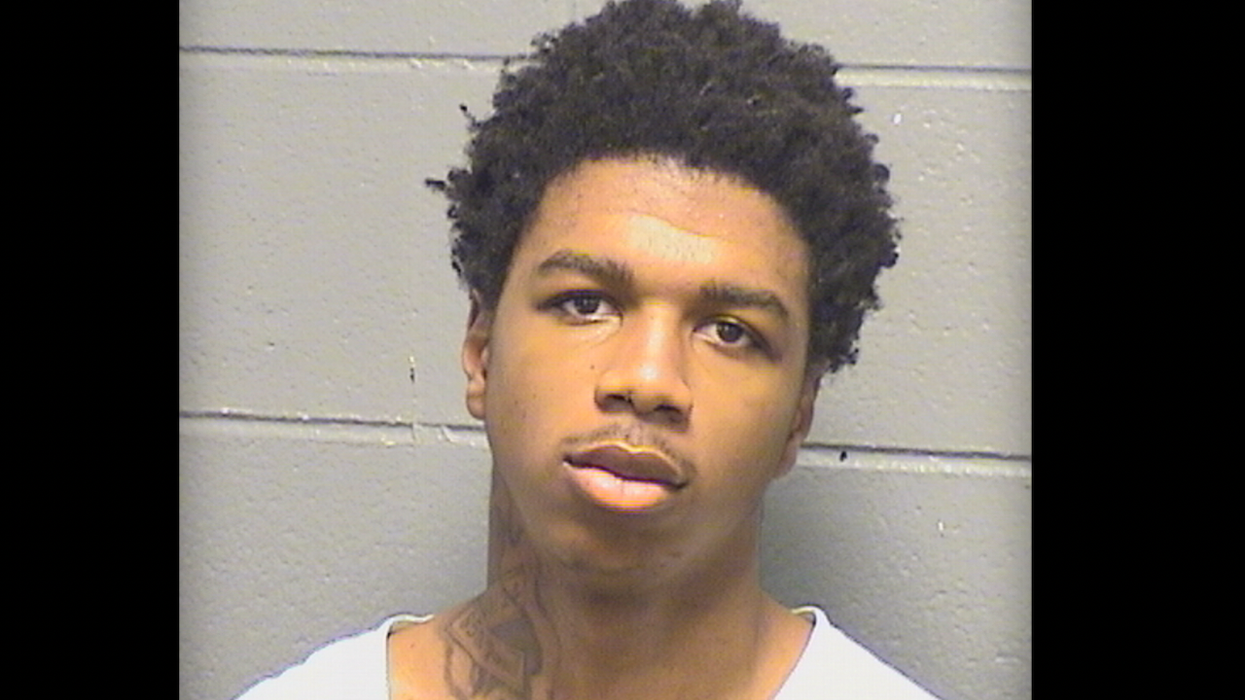A photo snapped just minutes after two tornadoes wreaked havoc on Pilger, Nebraska, Monday has led to intense debate, causing some to wonder whether storm-chasing photojournalist Mark "Storm" Farnik acted unethically in photographing a little girl who was gravely injured.
Calista Dixon, 5, was found crushed under the weight of her family's mobile home. As Farnik watched paramedics carry her body on a stretcher as she barely clung to life, he snapped pictures, later selling one to the Associated Press (which published the picture), among other outlets (see the heartbreaking photo here).
Farnik said Dixon looked as though she had been through a bombing — and that he was only able to photograph one side of her body due to the extent of her injuries. His heart "shattered" by what he observed, he later told media outlets, and he was moved by the compassion paramedics showed the child.
 Officials walk through the tornado damaged town of Pilger, Neb., on Tuesday, June 17, 2014. The National Weather Service says the storm that struck northeast Nebraska appears to have produced four tornadoes, one of which ravaged the town of Pilger. (AP Photo/The World-Herald, Ryan Soderlin)
Officials walk through the tornado damaged town of Pilger, Neb., on Tuesday, June 17, 2014. The National Weather Service says the storm that struck northeast Nebraska appears to have produced four tornadoes, one of which ravaged the town of Pilger. (AP Photo/The World-Herald, Ryan Soderlin)
But as he took the photos, emergency personnel were reportedly angry, calling him a vulture. At least one firefighter asked him to stop, but Farnik refused to comply.
"The people are a part of the story," he told USA Today. "I'll be damned if I don't photograph the victims here, because that's the story that really matters, not the damage."
Dixon ultimately succumbed to her injuries and died.
All of these details in mind, the central question is: Did Farnik violate any journalism ethics or standards in his decision to photograph Dixon?
Kenny Irby, a photojournalist who teaches visual journalism at the Poynter Institute, told TheBlaze that based on what has been reported, Farnik didn't cross any professional lines.
But Irby urges journalists to consider and set personal standards on difficult moral and philosophical questions, as these situations can be tricky.
"The basic premise that I offer for folks is [to] think about these decisions in advance and my suggestion is that you're a human being before you're a photojournalist or a journalist of any kind," he said, adding that reporters should give aid if they are able to do so.
In Farnik's case, he reportedly did help out upon reaching Pilger, searching for survivors in the rubble and lending his hand where needed.
 Pilger, Neb., residents walk down the street on Tuesday morning, June 17, 2014, among what is left of the town after two tornadoes ripped through Pilger on Monday evening. (AP Photo/Norfolk Daily News, Jake Wragge)
Pilger, Neb., residents walk down the street on Tuesday morning, June 17, 2014, among what is left of the town after two tornadoes ripped through Pilger on Monday evening. (AP Photo/Norfolk Daily News, Jake Wragge)
Irby said the role of a journalist is to "show the tragedies of life and the horrors of life," meaning that there are moments when it serves the greater good to capture an individual's injuries or the full gravity of a dire situation.
"[Farnik] said that he saw … and was moved by the compassion," Irby said. "That's a justification for being able to tell that story to render to an audience the kind of courage that's involved."
As for paramedics reportedly expressing frustration with him taking photos, the ethics expert said that it doesn't appear as though Farnik was in the way or interrupting medical service — both of which would have been professionally unacceptable.
"In the aftermath of this tornado this particular photographer has not, in my view, violated any ethical code of conduct of principal," Irby added.
That hasn't stopped some from heavily criticizing Farnik.
 Rubble lies next to buildings Tuesday, June 17, 2014, the day after two tornados struck Pilger, Neb. Two people were killed. (AP Photo/Norfolk Daily News, Jake Wragge)
Rubble lies next to buildings Tuesday, June 17, 2014, the day after two tornados struck Pilger, Neb. Two people were killed. (AP Photo/Norfolk Daily News, Jake Wragge)
"You're a coward. Be a man and make money off yourself and not 5 yr old dying girls," wrote Twitter user @Craig_Henslin.
Using some harsher language, @ukuleledan said: "And the award for being a worthless piece of s**t goes to @StormFarnik."
Farnik also came under fire for a Facebook post he reportedly wrote earlier this month seemingly wishing for tragedy to strike before the tornadoes hit. He wrote: "I need some highly photogenic and destructive tornadoes to make it rain for me financially."
USA Today noted that he has since removed the post, explaining that frustration drove the comment, and admitting that it was "off-color." While Irby said this post might speak to motive, he called it "circumstantial" and said that, either way, no journalistic codes were broken.
Farnik has defended the use of the photo and announced this week that he will be holding a fundraiser to help pay for Dixon's funeral expenses.
What do you think? Let us know below.

 Officials walk through the tornado damaged town of Pilger, Neb., on Tuesday, June 17, 2014. The National Weather Service says the storm that struck northeast Nebraska appears to have produced four tornadoes, one of which ravaged the town of Pilger. (AP Photo/The World-Herald, Ryan Soderlin)
Officials walk through the tornado damaged town of Pilger, Neb., on Tuesday, June 17, 2014. The National Weather Service says the storm that struck northeast Nebraska appears to have produced four tornadoes, one of which ravaged the town of Pilger. (AP Photo/The World-Herald, Ryan Soderlin)





